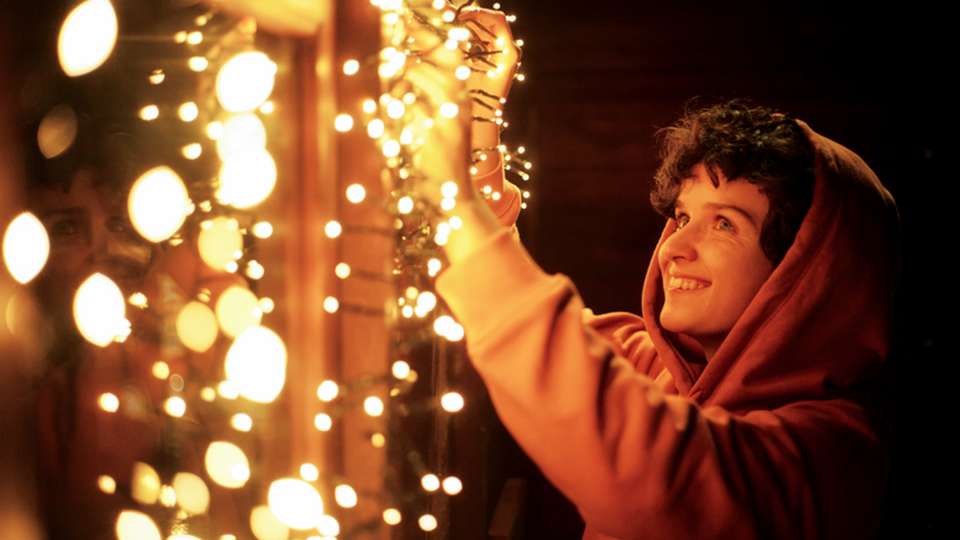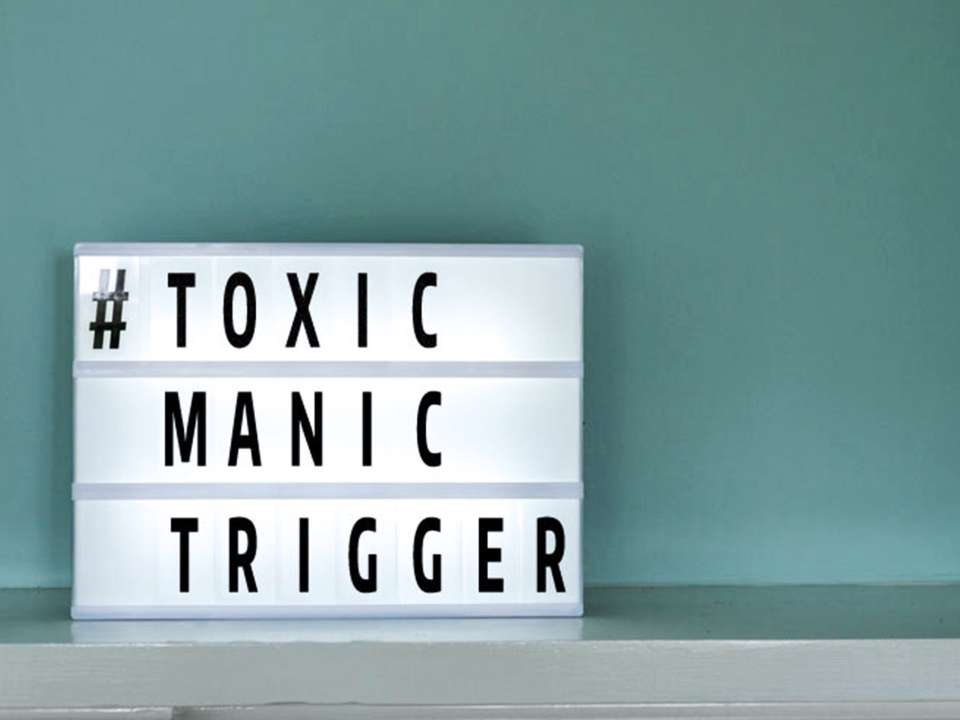
The Big Dark is here. The winter solstice — the shortest day of the year — is on Dec. 21, and until then our days will keep getting darker and colder.
With darker days and the less agreeable weather, it’s understandable to feel apprehensive or down about winter. Or maybe you’re already noticing a change in your mood.
While we can’t change the weather or the hours of daylight (if only), there are ways to counter stress and feelings of sadness.
What causes mood problems in winter?
A lot of factors are at play during winter that can contribute to feelings of sadness, loneliness, depression and anxiety.
First, the light (or lack thereof). Those of us who live at higher latitudes are forced to deal with 8:00 a.m. sunrises and 4:30 p.m. sunsets along with daylight hours that are obscured by heavy rain clouds.
“The short photoperiod of the fall-winter has significant negative impact on energy, mood, and sleep and can create a ‘hibernation response’ for many,” says Dr. David Avery, a professor emeritus in the Department of Psychiatry and Behavioral Sciences at the University of Washington School of Medicine.
By “hibernation response” he means not just staying indoors but also sleeping more, exercising less and eating more, all of which can lead to low energy and motivation as well as mood problems.
The continued pandemic and continued need for things like physical distancing isn’t helping either, Avery says.
“Isolation can be a big problem when people get depression. It becomes a vicious cycle: Depression causes people to isolate, and the more isolated they are, the more depressed they are,” he explains.
For some people, all or some of these factors may lead them to develop winter depression, which is called seasonal affective disorder (SAD).
Tried-and-true winter mood boosters
Whether you’re struggling a lot or a little, there are some proven ways to stave off winter depression. Experiment with new routines to see what makes you feel better.
Get the right amount of sleep
Pretend you’re Goldilocks: In order to benefit the most from a night’s sleep, you need to get not too much, not too little, but just the right amount.
What is the right amount, you may ask? Well, that depends. Some people thrive on just six hours a night while others may need nine. Each person’s needs are different.
The key is to tailor your sleep schedule to your body’s needs. Don’t continuously deprive yourself of sleep but don’t regularly oversleep, either.
“Sleep deprivation can lower mood, but excessive sleep can also make depression worse,” Avery explains.
Note how much sleep you get now and how you feel. Adjust the amount if needed. If you can, nix the alarm clock and see when you naturally wake up. Consider keeping a sleep diary to keep track of how much sleep you get and how external and internal factors are impacting it.
Ensure good quality sleep
Along with getting the right amount of sleep, it’s important to make sure the sleep you’re getting is good quality, meaning you aren’t waking up throughout the night.
There are many ways to work toward this. Try to wake up and go to bed at the same time (yes, even on weekends). Avoid drinking caffeine or alcohol before bed and avoid watching or listening to stress-inducing shows (save your fave true crime podcast for the daytime). Only use your bed for sleep and sex (no doomscrolling allowed). If you’re prone to insomnia, avoid daytime naps.
Another important strategy is to decrease your exposure to evening and nighttime lighting, or as Avery calls it, “dark therapy.” This means dimming lights in your home or turning some off altogether. Start doing this a couple hours before bed to start hinting to your brain that sleep is approaching.
Lastly, you probably know that you should avoid using blue light-emitting electronic devices in the late evenings before bedtime, but we’re emphasizing it because it is pretty important.
“Our exposure to electronic devices with a lot of blue LEDs, such as computers and TVs, create the potential for very erratic light signals which can create erratic circadian rhythms and erratic sleep,” Avery says.
Try light therapy
During the day, it’s important to increase your exposure to daylight. There are a few ways to do this. You can try to spend more time outside — yes, even on dreary days — to get natural light. You can also try getting an indoor light designed to help treat SAD.
These lights are designed for home use and mimic natural sunlight, though they aren’t quite as bright. They range in brightness from 2,500 lux to 10,000 lux. How long you should have the light on depends on how bright it is; dimmer lights may warrant two hours a day whereas brighter ones only half an hour or so.
For most people, especially those who have difficulty waking up in the morning, the bright light box is best used in the morning soon after awakening. Some lights, called wake-up lights, are even designed to slowly increase in brightness to mimic the sun.
People may also benefit from adding the bright light box in the early evening. In this way, the person can create an artificial photoperiod of 12-14 hours, a photoperiod that is similar to that experienced in the spring and summer. The timing of the photoperiod should be stable over time; the new sunrise time should remain about the same and the new sunset time should remain about the same, even on weekends.
You don’t have to sit right under it to benefit from its glow; as long as you can see it, you’re good, even if it’s in your peripheral vision while you read, enjoy a cup of coffee or check email.
Many people notice a difference in mood within a few days and should be feeling significantly better within a week or two of light therapy, Avery says.
Move your body during the day
Whether you like walking, trail running, weightlifting or something else, try getting some kind of movement in each day to help boost your mood and regulate your sleep-wake cycle.
If you want to optimize the benefits of exercising, try to do it earlier in the day, when it’s still light outside.
“Exercise in the morning has a similar effect on our body clocks as bright lights in the morning,” Avery explains.
Stay connected with people you care about
Don’t fall into the isolation trap if your mood starts dropping. It’s common for people who feel depressed to isolate themselves from others, but this usually doesn’t make them feel better.
Though the pandemic has made socializing harder for many of us, there are still ways to stay in touch with people you care about. Tailor your activities to your comfort level. If you don’t want to go to an event, invite a friend or two over for dinner. If you’re sick of Zoom chats, try meeting up for a walk or outdoor activity.
What to do if nothing helps
If you’ve tried having better sleep hygiene, getting more daylight exposure, exercising and seeing friends and you still feel depressed, it’s worth talking with your doctor.
Medications such as selective serotonin reuptake inhibitors (SSRIs) or bupropion have been shown to help some people who are dealing with SAD, Avery says.
A type of therapy called cognitive behavioral therapy (CBT) is also effective. Depression that won’t let up may also be a sign that you should consider talking with a therapist or, if you’re not quite ready for that step, trying out a therapy app.
How mental health professionals deal with winter
Want more ideas for how to boost your mood this winter? We asked psychologists, psychiatrists and other mental health specialists at UW Medicine what they do to feel better during the cold, dark months.
From Doyanne Darnell, Assistant Professor of Psychiatry and Behavioral Sciences at UW School of Medicine and Clinical Director of Psychological Services at Harborview Mental Health and Addiction Services:
- Keep up on my vitamins, especially vitamin D.
- Use a mood light therapy lamp during the work week for 30 minutes a day.
- Stay physically active. I go for a walk outside — rain or shine — for one hour a day.
- I find that festive holiday decorations in the house help also — cozy lighting, scented candles — help to take the edge off of the darkness. So, my holiday decorations go up early and stay up late.
From Dr. Ramanpreet Toor, Assistant Professor of Psychiatry and Behavioral Sciences at UW School of Medicine and Director of the Integrated Care Training Program (ICTP):
“In the evening, what helps me is having lights on in the house so that it is nice and bright. Also, we always have a plan to do something in the evening after work and before dinner as a family. Usually for one hour or less. It can be playing a board game, driving to see holiday lights or cooking something together. So having some plan and structure helps.”
From Kristen Lindgren, Professor in the Department of Psychiatry and Behavioral Sciences and Co-Director of Trauma Recovery Innovations at UW Medicine:
“I try varying between embracing the coziness of the winter via reading a good book, watching a favorite movie, spending time with friends and family, cooking something delicious; and braving the cold/wet/dark by getting out for a run or walk or going for a hike or a cross-country ski. For me, a mix of both is really helpful.”
From Pat Areán, Professor in the Department of Psychiatry and Behavioral Sciences and Director of the ALACRITY Center and the CREATIV Lab:
- I get outside for a hike or walk, even in the rain. Doing something that is not indoors is a great way to cope with the “dark days of Seattle.”
- Because the days get light so late in the morning and dark so early in the evening, I find myself being pretty tired by around 4 p.m. I make sure I am doing something that is fun and energizing in the afternoon, either play with the dogs, read a thriller or do some art project.
- I don’t do this, but some people find SAD lamps to help them a lot. I have a colleague who is from Southern California and when she moved here, she invested in one and claims it really helped her a lot.
From Emily Dworkin, Assistant Professor in the Department of Psychiatry and Behavioral Sciences:
“Cognitive behavioral models of depression say that, when we do fewer activities we enjoy or value, our mood tends to suffer, which makes it even harder to do those activities. I find that, when it’s dark and damp out, it gets harder to do things I enjoy and value. So to head off the vicious cycle of low activity and low mood in the winter, I make an extra effort to put things in my schedule in advance that tend to happen more easily and spontaneously in the summer, like weekend drives to the peninsula and evening time with friends. I also try to really appreciate the chance to shift to indoor hobbies, like reading and knitting, that I tend to do less in the warmer months when I’m on the move.”
From Michele Bedard-Gilligan, Associate Professor in the Department of Psychiatry and Behavioral Sciences, Co-Director for Trauma Recovery Innovations and Associate Director for the UW Center for Anxiety and Traumatic Stress:
- I definitely still continue outside exercise! I have invested in a raincoat that I can hike and run in and I still do these things even in the winter.
- I embrace the shorter days by going to bed earlier and getting up earlier. Shifting my schedule a bit makes the early darkness less of a downer.
- I drink a lot of hot tea. I stock up on all different flavors and try new ones (our house is old and drafty!).
- I treat myself to my favorite winter coffees (mochas, lattes, etc.). Normally I don’t buy coffee but in the winter I do!
- I embrace many, many winter/holiday traditions with my kids. Gives us all things to look forward to.
- I read a lot. And binge TV shows.
- I make plans for summer. Reminding myself that the seasons come and go helps me both savor winter and keeps me future oriented for sunshine.

 Healthy ideas for your inbox
Healthy ideas for your inbox





